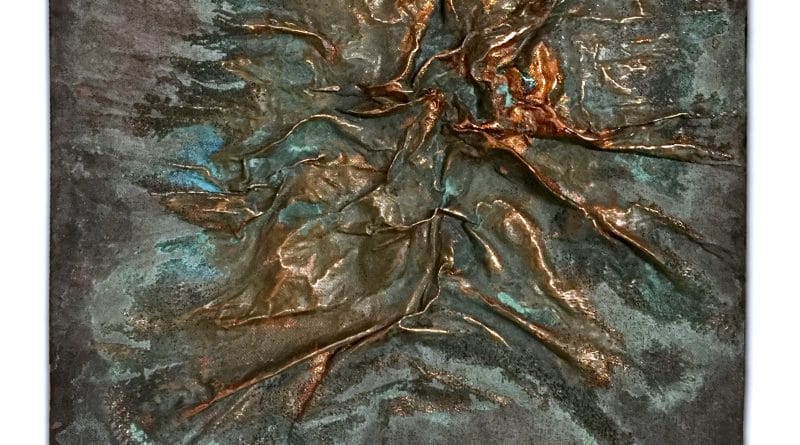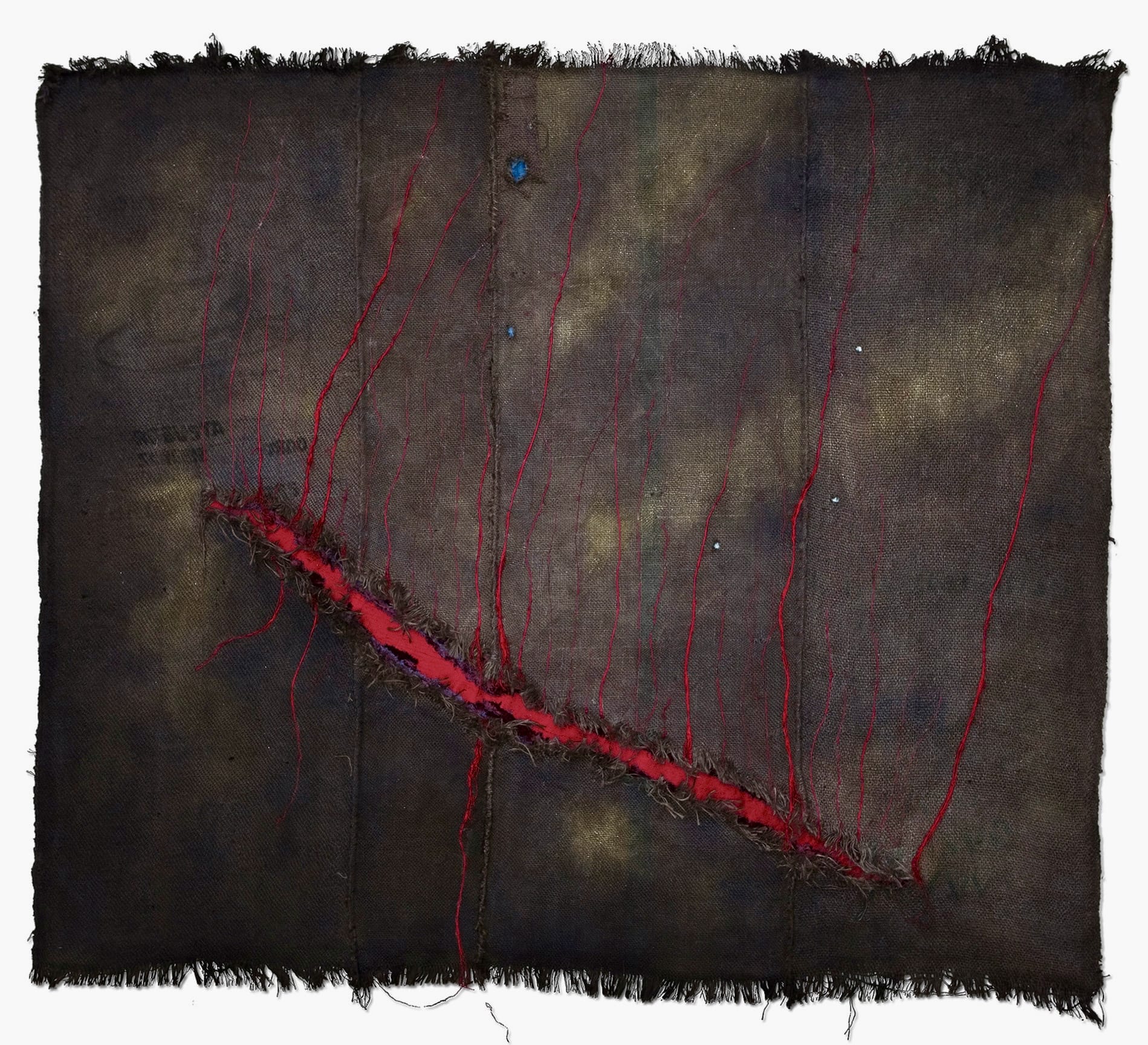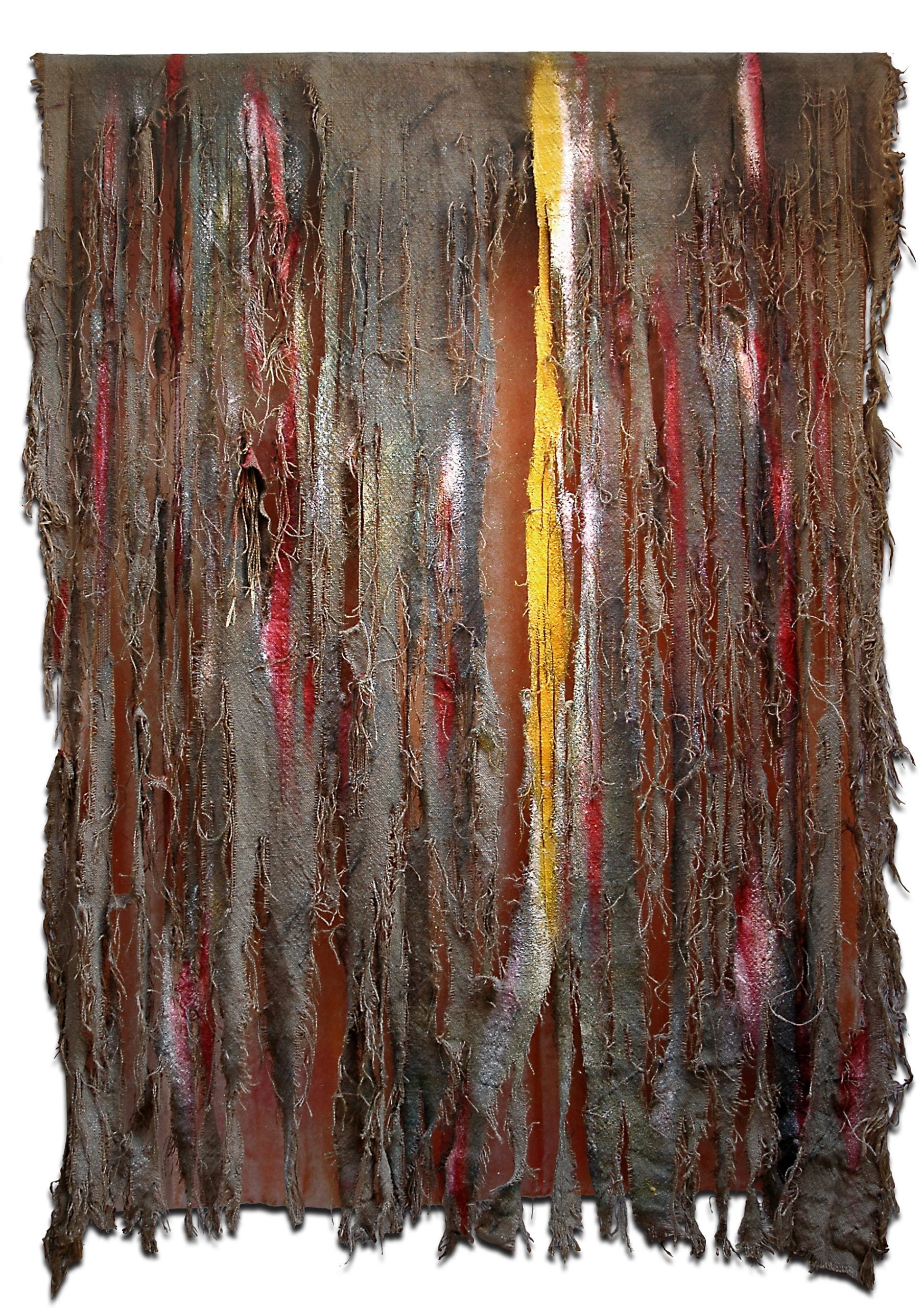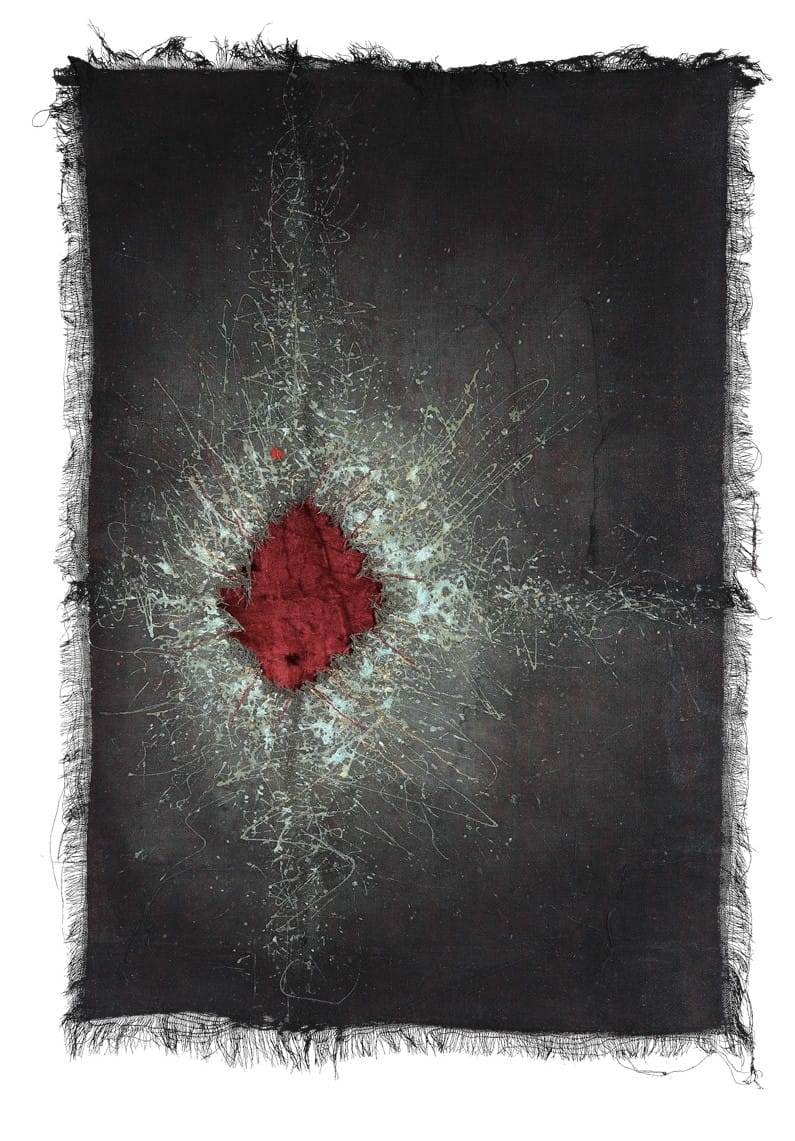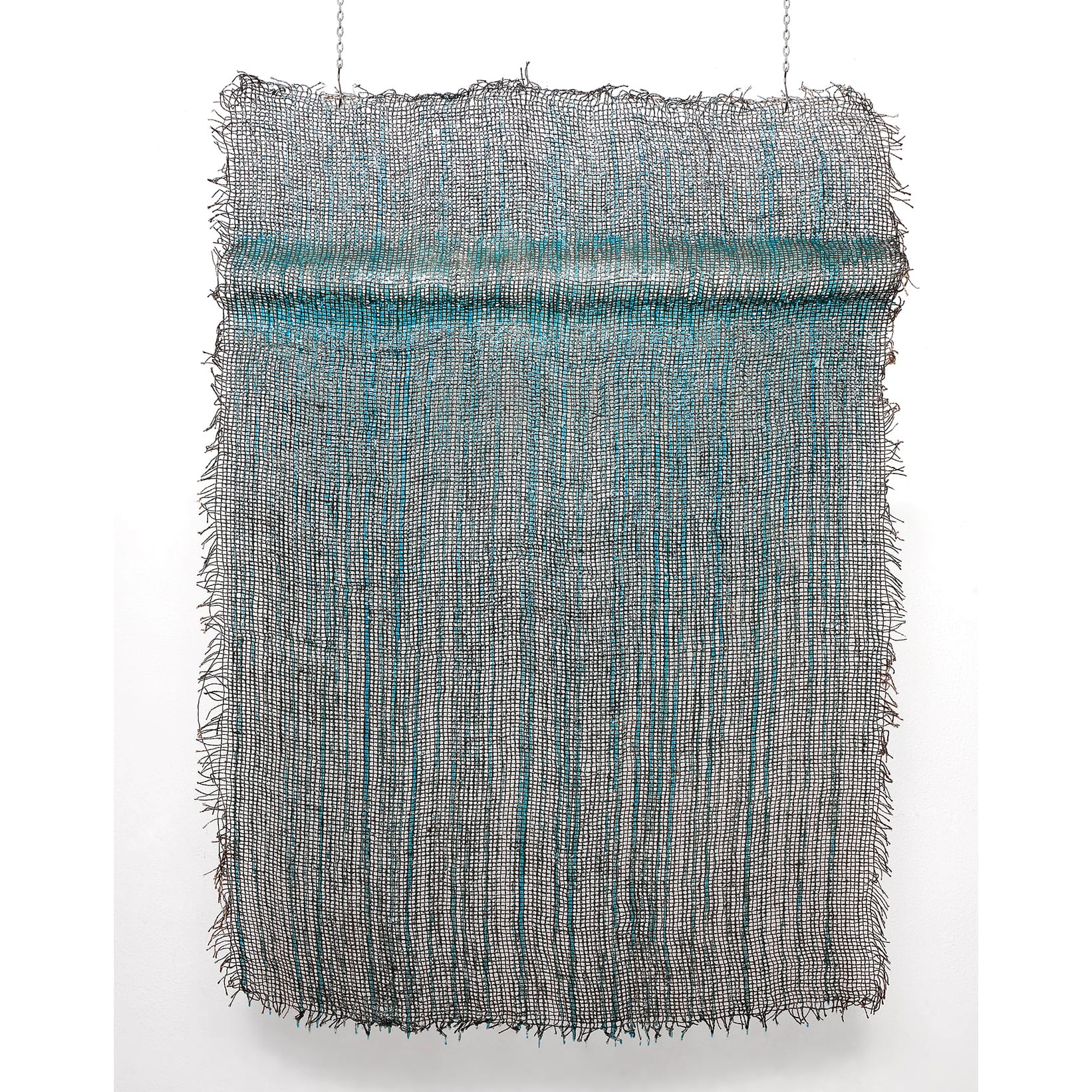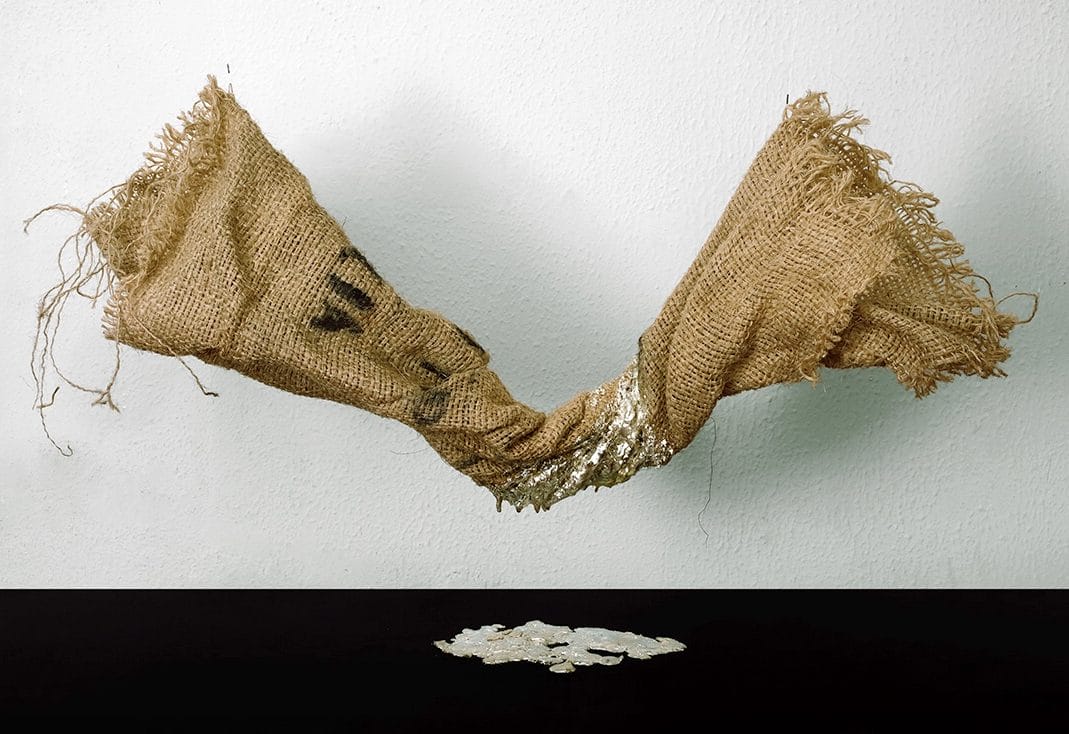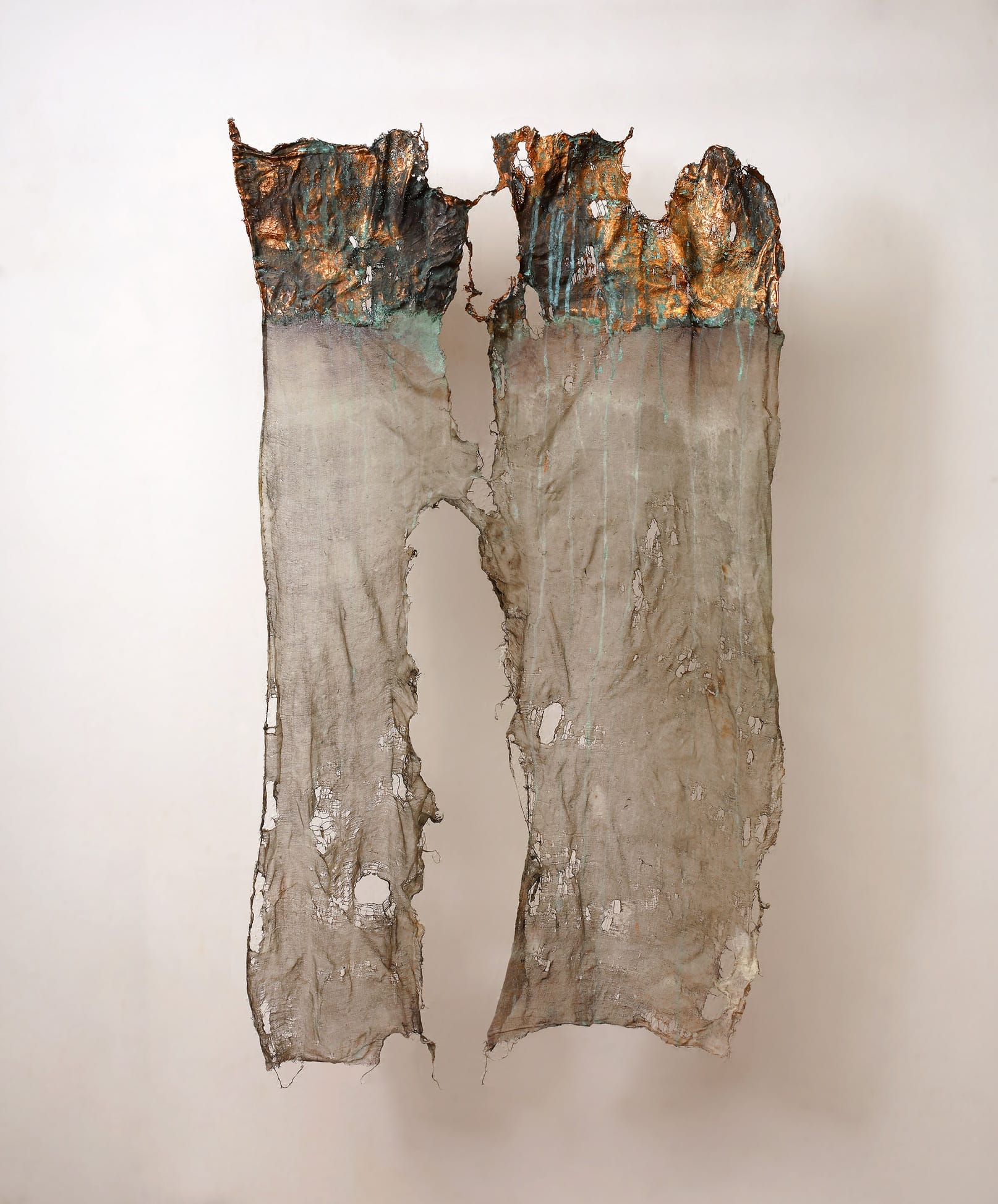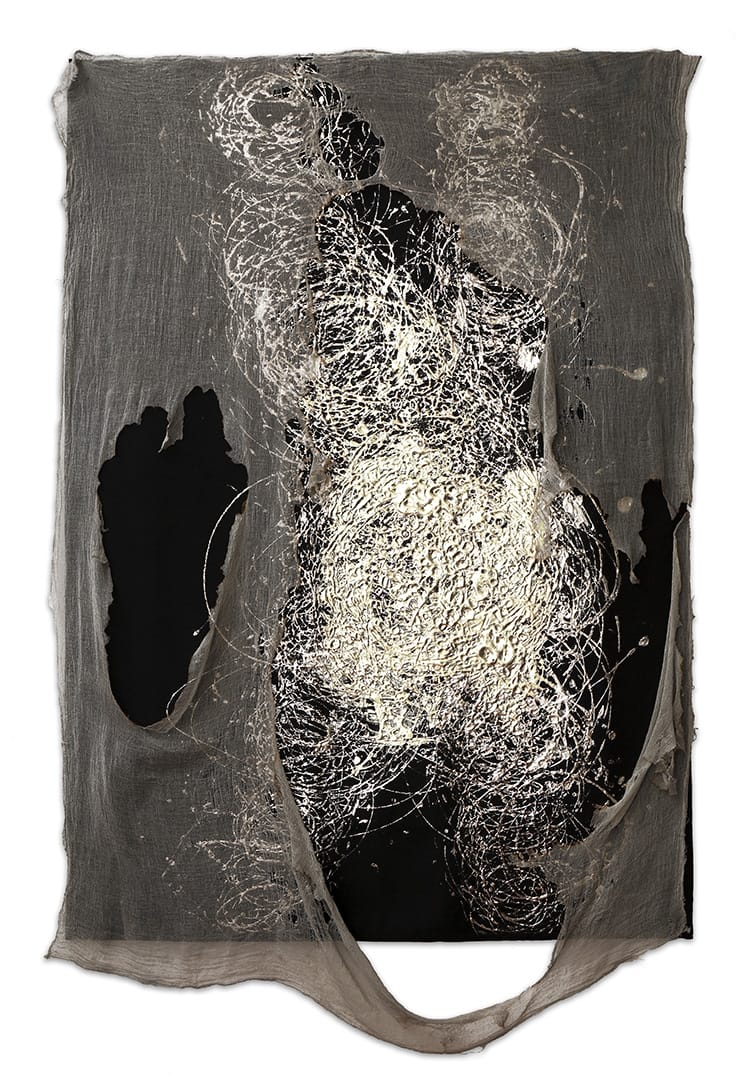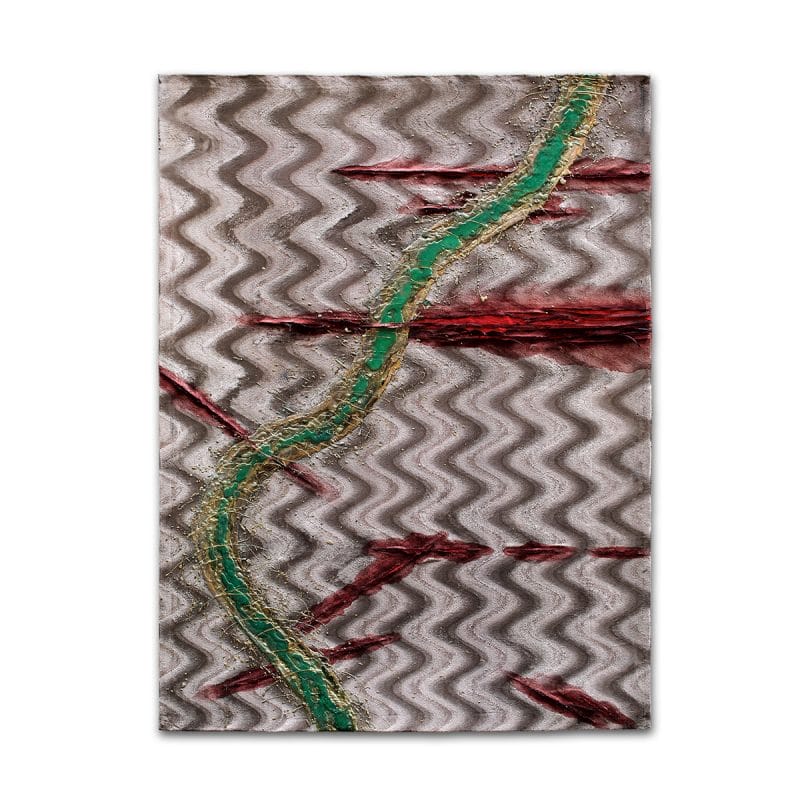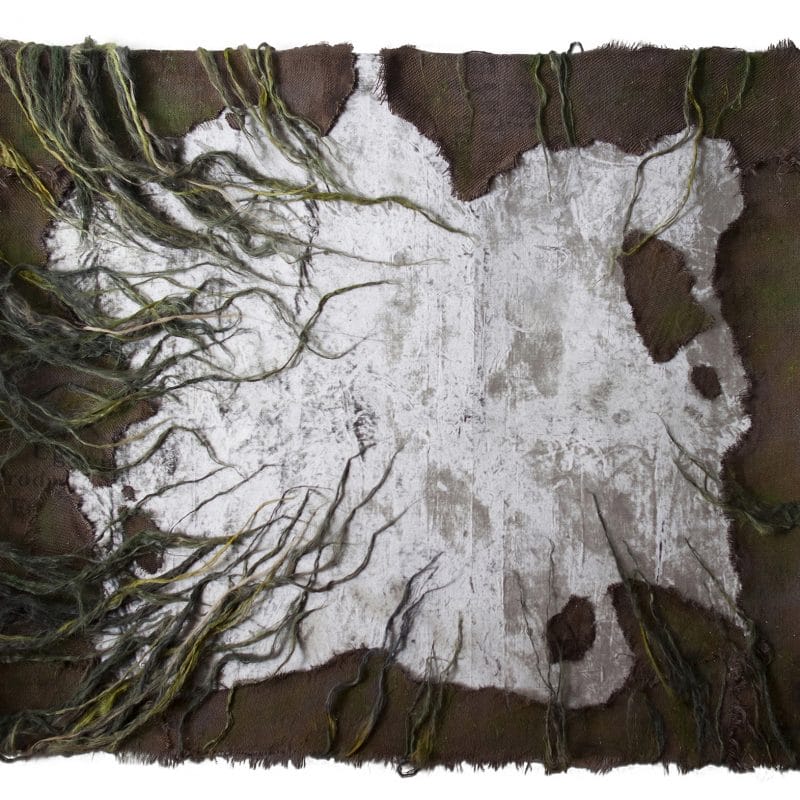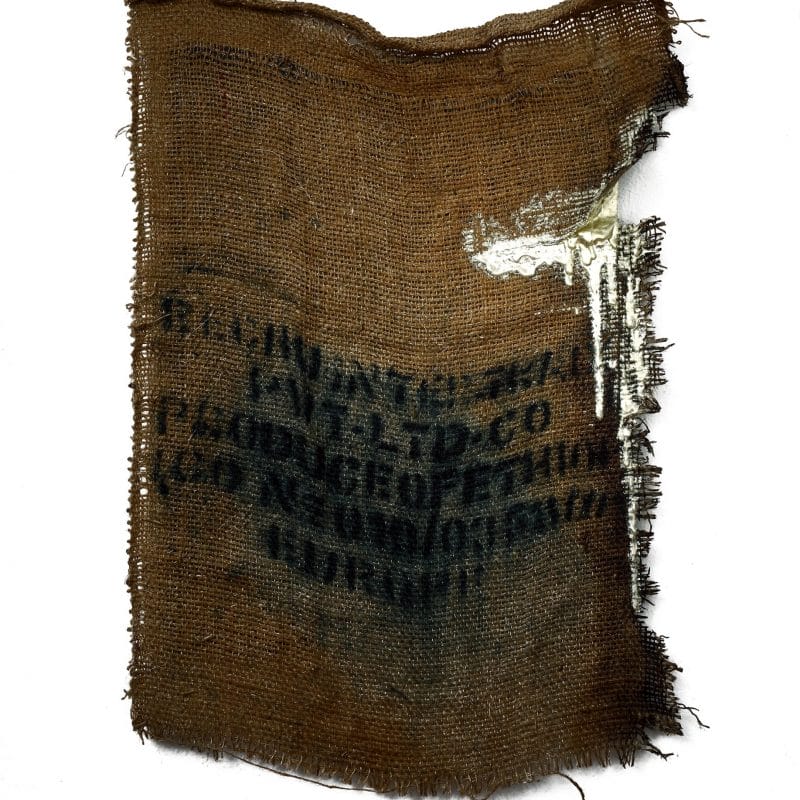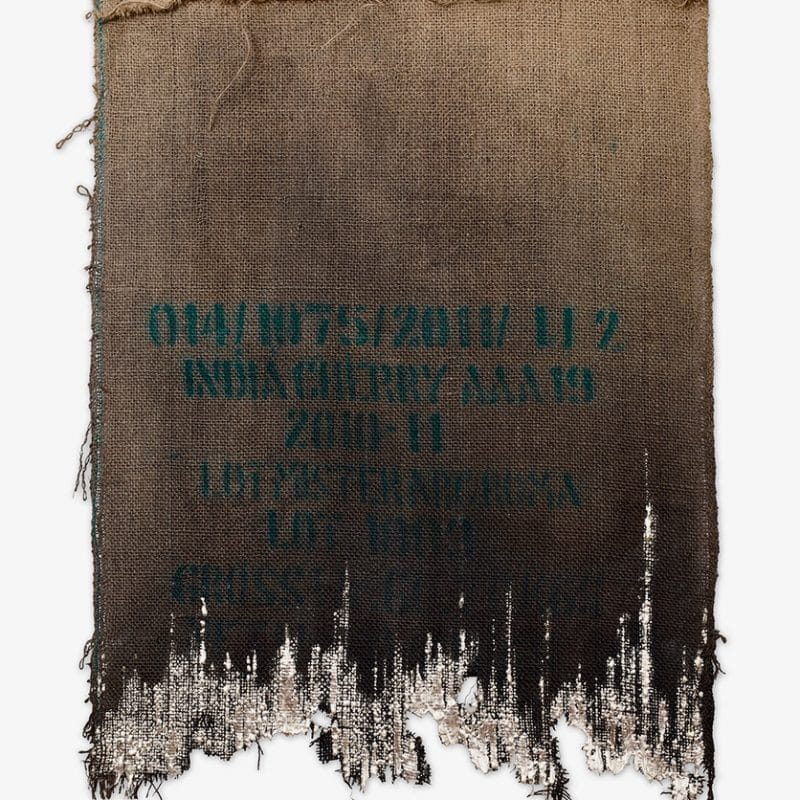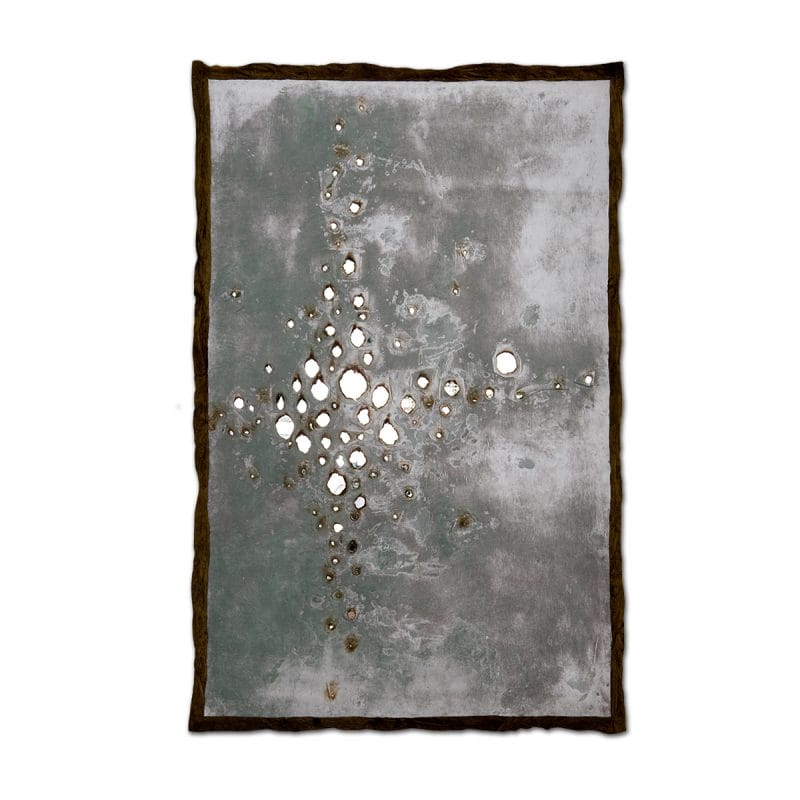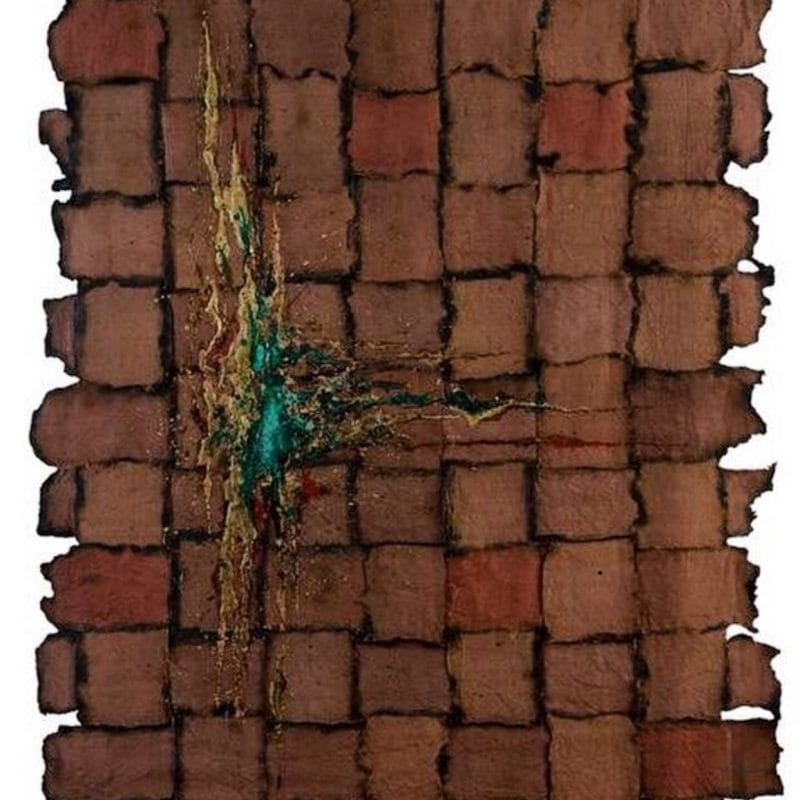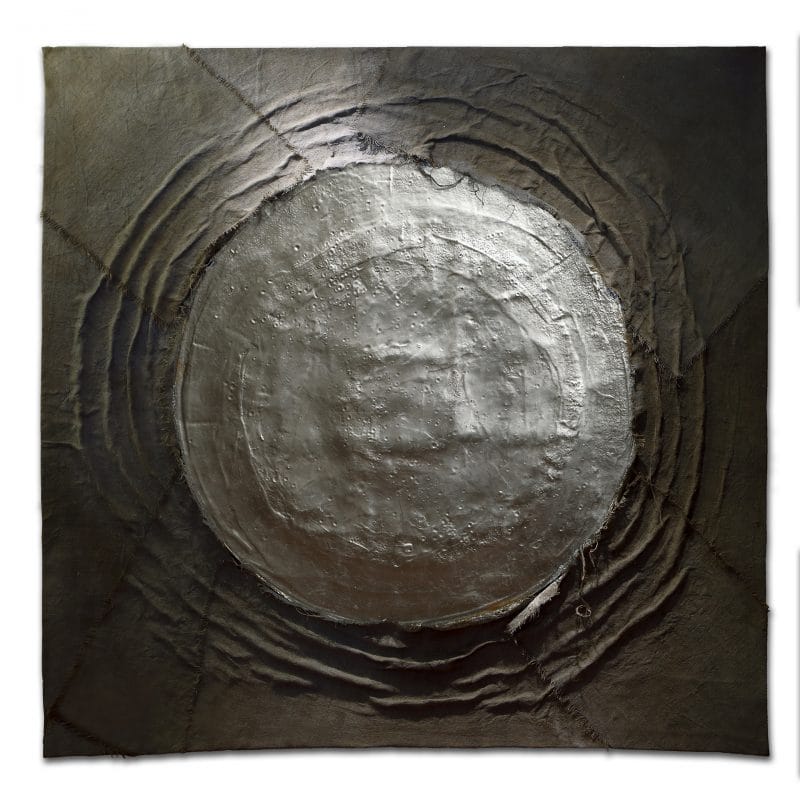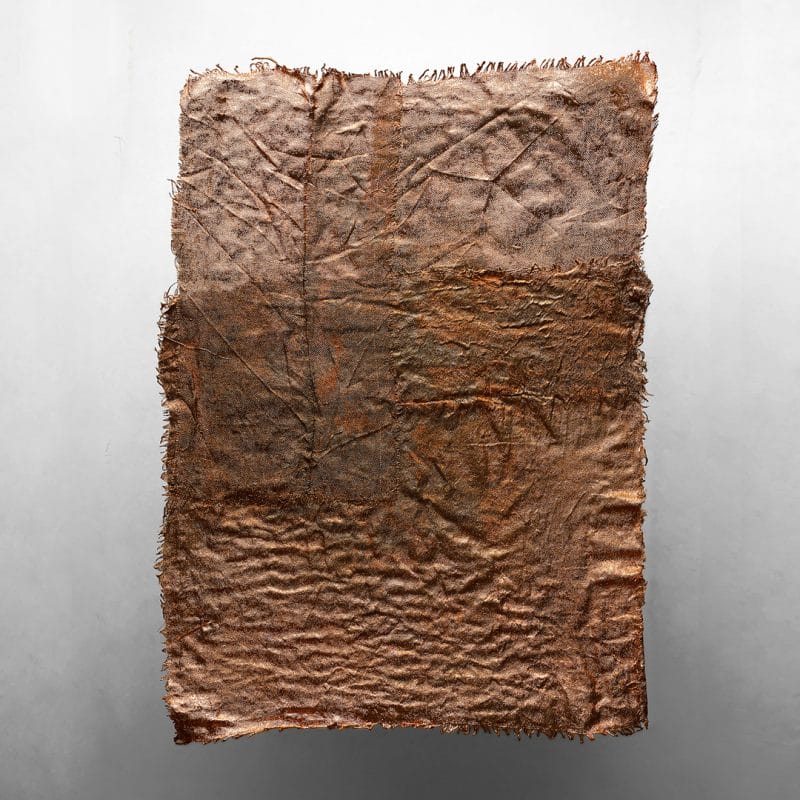INTERVIEW WITH TANIA WELZ
*Featured photo: Chrysopoeia study no.4, 2020 | 40 cm x 40 cm| gauze, copper. Copyright Tania Welz
Translation by Elena Redaelli
Tania Welz was born in Munich, Germany, and has lived and worked in Rome for over 20 years. Her artistic practice is the result of constant experimentation with materials and techniques. The interaction of opposites, the effect of fire on matter, the influence of chemical and physical phenomena: everything contributes to giving shape to works that have their roots in the flow of time and change.
Award-winning internationally, her work has been exhibited in China, Poland, Germany, the United States, and in Dubai, London, Belgrade, Bratislava – to name a few.
Tutto ciò che (non) puoi lasciare indietro, anno: 2011 | 225×200 cm |recycled jute from Pakistan / Brasil / India, velvet, silk. Copyright Tania Welz
If I had to identify two terms to define your work, I would choose TRANSFORMATION and EVOLUTION. Do you find in this, at least in part, a synthesis of your artistic research?
Absolutely yes! They are the two most important themes in my work as they mark life and not only mine but also that of each of us.
Life is in eternal transformation and in my opinion it does so to evolve both individually and collectively.
How autobiographical are your works?
My works up to 2015 were mainly inspired by the events of my personal life. Then I was increasingly attracted to more complex issues, bringing attention to social and global changes. They are like a sponge that absorbs the environment and then releases it in an artistic form.
Stracci del passato, 2001 | 190×150 cm | iuta, velluto. Copyright Tania Welz
Continuous experimentation with techniques and materials is a fundamental part of your artistic practice. How important is it for your work? Does the material sometimes have an intrinsic meaning that contributes to the overall meaning of the work, also becoming content
I love experimenting with different techniques by devising new processing paths. Sometimes my studio is full of small containers of unusual materials that I use to make them interact with the textile bases of my works. I am very stubborn when I want to produce a certain effect and I try to get close through many experiments with unusual materials.
My creative mind is very fast and sometimes I can’t keep up. When I finally found a solution, my mind has already created 4 or 5 works that have evolved from the original idea.
The choice of materials is also a fundamental aspect of the language of my work. For example, the choice of industrial jute reflects very much the different social tensions on the global level as it represents the manual and humble labor force, subject to exploitation and slavery.
When I work with this material, I always have to imagine how many hands it went through until it reached my work table. It is a source of great inspiration as the fabric tells its story.
Thus the materials I use, the dynamics with which I relate them in the work, the stresses to which I submit them to manifest unexpected connotations always have an intrinsic, almost symbolic meaning, that my artistic work refers to.
Love Is, 2010 | 175×130 cm |jute, natural resin, velvet. Copyright Tania Welz
When and how did you come to the textile medium?
It is a creative relationship that has accompanied me throughout my life. As a teenager I created my own outfit line; already at that time I used to go around with jute sacks decorated with pearls. I created entire collections, spending hours and hours behind my sewing machine. Coming to artistic creation was a natural development with that fascinating and versatile medium. The textile medium offers a wide range of possibilities to express oneself and experiment, ideal for my strong inclination to dexterity and research.
La fine delle sposa, 2011 | 200×130 cm | jute, silk, latex. Copyright Tania Welz
How much and how has your research and your artistic practice changed over time? Is there a job that you cannot part with as it is a part of you?
My creative mind constantly offers me works and realization possibilities and in the end I have to choose what to transport from imagination to reality. Maybe years ago the choice was much more emotional and less reflective than today.
Over time my works have become increasingly linked to themes of social and conceptual importance; for example the use of real gold sheets introduced for the first time in the ‘Chaosmos’ series allowed me to talk about our connection with a distant past as gold was created 200 million years ago and is still present in our daily life. I am very attracted to this noble material that persists over time and lasts forever.
I had to learn over time to let go of many things. Perhaps the attachment we have in general brings us a lot of pain and problems.
To answer your question more precisely, I can say that of all of my works I am still very attached to
‘And then comes the sun’ with which I have a very deep relationship and I struggle a lot at the thought of letting it go …
The Water Hunters No.4, 2020 | 195 cm x 130 cm x 7 cm |jute, epoxy resin. Copyright Tania Welz
How does the public relate to your works? What would you like them to convey to the user?
Generally the public is involved in the vision of my works and appreciates both the aesthetic side and the artistic value; every now and then he gets lost as if faced with something unexpected but I can say that the majority of users tend to show interest in my works and I like this because getting recognition for their work is also important for an artist.I would like the relationship with my artistic production to activate in the user the recognition of the possibilities of enhancing their personal stories. I think that every story, however poor or even trivial it may seem, is a wealth to be valued but that too often we fail to do so because we are in an emotional blindness that does not show us our possibilities.
Quinta Essentia N°5 / Italia, 2019 | 85 cm x 40 cm x 30 cm | recycled jute from Kenya, latex, real gold leaves (12 karat, alloy with silver). Copyright Tania Welz
In the latest works, the fabric becomes metal. Can you tell me about this new series of works?
My latest series is a further development of my artistic research. I called it Chrysopoeia; the term Chrysopoeia is borrowed from alchemy and means transmutation into gold or completion of the “Magnus Opus”, symbolically indicating the successful transformation of all impurities into gold. The transformation of poor materials into a “higher” form, commonly known as “upcycling”, is at the heart of this new series.
After a long series of experiments with techniques traditionally used to metallize objects with copper, silver or gold, I was able to graft this complex chemical and electrolytic process on the fabric that makes the different components of matter interact.
The result is a transformation of the fabric from fragile and malleable to solid and hard, from opaque to shiny, while its original texture remains intact and continues to support the symbolic expression of the textures of existence.
What are the difficulties of being an artist in such uncertain times? And what is the contribution of art to society in a transition phase like this one, marked by the pandemic and the difficulties related to it?
We certainly live in a very complex period. We are in continuous, and often unexpected and unpredictable, changes and being an artist has always been a vocation for work with uncertain outcomes. I think that often an artist feels discouraged because he has to combine his artistic work, which commits his resources and decentralizes it, with an ability to promote his work that could be very distant from his real interest. Perhaps the artists are the most trained to deal with a complex world subject to the action of the many actors who influence their daily lives; I am thinking of the world of art with which we relate.
With respect to society, in my opinion, art should give impetus, as I mentioned, to two directions: the first is to activate hope in the human attitude of living fully even in this bewildered time, supporting the confidence in the ability to be in transformations, both in personal life and in the relationship with the community, without being overwhelmed by it; the second is to bring closer the tangible as opposed to the virtual which, in my opinion, is invading too many spaces of life, in short, re-evaluating matter as an element with which to relate.
To evoke amazement through what emerges from the material is art and at the same time it initiates a dynamic process through the stimulation of our senses; thus allowing a shift of our perception from the invasive constriction of the virtual world to the vast reality of the tangible moment. It is a first step in a process to rethink the world as a place where the human generates a dynamic development of which the work of art, with its evocative power, is the trigger. Thus, in my intention, the gap between artistic production and life is reduced.
Who is Tania Welz, the artist?
The artist Tania Welz is perhaps my noblest part …
Do you have a dream in the drawer?
I would like to be part of a collaboration with the fashion world. From my adolescence to today I have always been very fascinated by the creativity of this sector and I believe that the synergy of these two worlds could give life to wonderful creations.
